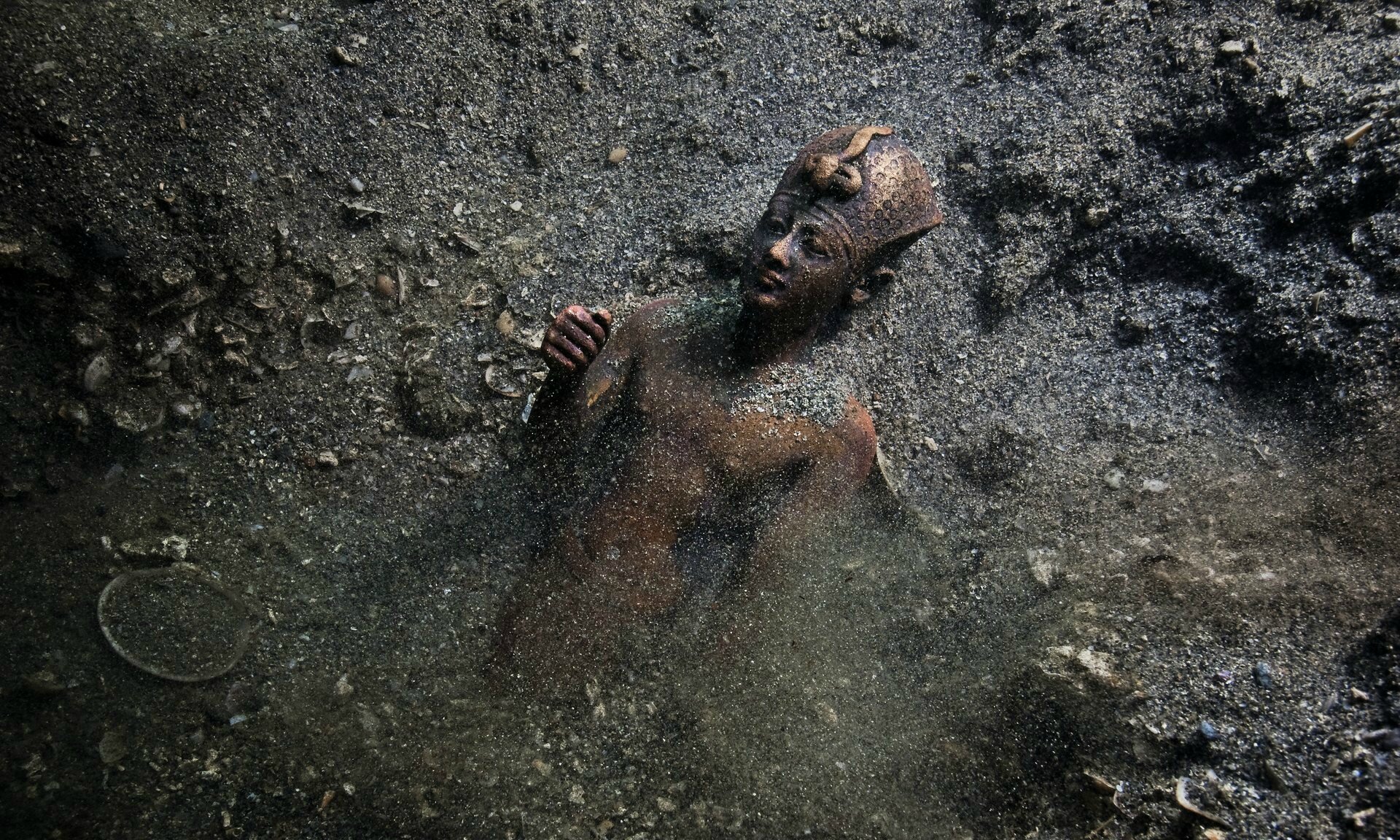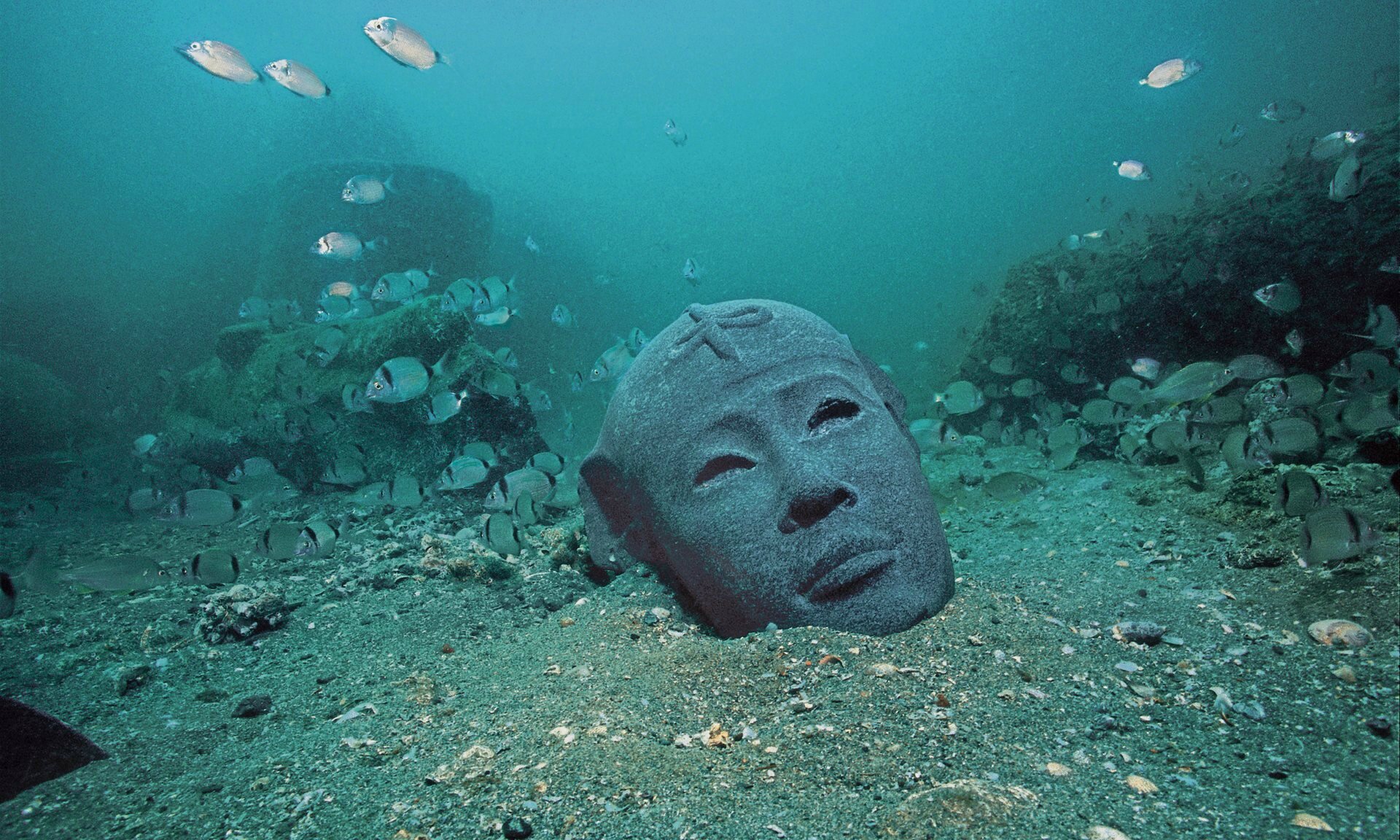Vanished beneath the waters of the Mediterranean, the lost cities of Thonis-Heracleion and Canopus lay at the mouth of the Nile. Named after the Greek hero Heracles, Thonis-Heracleion was one of Egypt’s most important commercial centres for trade with the Mediterranean world and, with Canopus, was a major centre for the worship of the Egyptian gods. Their amazing discovery is transforming our understanding of the deep connections between the great ancient civilisations of Egypt and Greece.
Preserved and buried under the sea for over a thousand years, the stunning objects in the exhibition range from magnificent colossal statues to intricate gold jewellery. Sacred offerings and ritual objects reveal the cult of Osiris – the god of the underworld who held the promise of eternal life. They tell stories of political power and popular belief, myth and migration, gods and kings. Journey through centuries of encounters between two celebrated cultures, meeting iconic historical figures such as Alexander the Great, Cleopatra, Hadrian and Antinous on the way.
Preserved and buried under the sea for over a thousand years, the stunning objects in the exhibition range from magnificent colossal statues to intricate gold jewellery. Sacred offerings and ritual objects reveal the cult of Osiris – the god of the underworld who held the promise of eternal life. They tell stories of political power and popular belief, myth and migration, gods and kings. Journey through centuries of encounters between two celebrated cultures, meeting iconic historical figures such as Alexander the Great, Cleopatra, Hadrian and Antinous on the way.
Unlike Babylon, Pompeii or mystical Atlantis, few people today have heard of Thonis-Heracleion. Indeed, until the remarkable finds of recent years, there was a danger that the waves of the Mediterranean would consign to history not only the city’s physical remnants, but even its memory as well.
And yet if you were a European merchant in the fifth century BC – an importer of grain, perfume or papyrus perhaps, or an exporter of silver, copper, wine or oil – then Thonis-Heracleion loomed large on your horizon. The same was true if you were a Carian mercenary, an educated Greek, a professional sailor, or a member of the Pharaonic court. Scattered across a series of interlinked islands, sand and mudbanks, Thonis-Heracleion – part aquatic marshland, part urban sprawl – was ancient Egypt’s bustling, cosmopolitan gateway to the Mediterranean, and thus its nexus with the western world.
Founded around 2,700 years ago on the site of present-day Abu Qir bay, 15 miles north-east of Alexandria, Thonis-Heracleion predated its better-known neighbour as the main emporion (trading port) for the region by several centuries and was a hub for international commerce.
Criss-crossed by a network of canals and dotted with harbours, wharves, temples and tower-houses – all joined together by a network of ferries, bridges, and pontoons – the city controlled most of the maritime traffic coming into Egypt from the Mediterranean. Goods would be inspected and taxed at the customs administration centre, and then carried on for distribution further inland, either at Naukratis – another trading port that lay almost 50 miles further up the Nile – or via the Western Lake, which was connected by a water channel to the nearby town of Canopus and offered access to many other parts of the country.
Although Thonis-Heracleion and Canopus are mentioned by many of the great chroniclers of antiquity, from Herodotus to Strabo and Diodorus, most detailed knowledge of their existence was feared to have been permanently lost.
By the second century BC, Thonis-Heracleion’s era of pomp and prestige was already fading. Further along the coast, the new metropolis of Alexandria was rapidly establishing itself as Egypt’s preeminent port, while the hybrid foundation of land and water upon which Thonis-Heracleion was built had begun to feel less secure. It wasn’t a single natural disaster – an earthquake, tsunami, rising sea levels, or subsidence – that doomed the city, but rather a combination of them all.
At the end of the century, probably after a severe flood, the central island – already sagging under the weight of the main temple buildings – succumbed to liquefaction. In what must have been a terrifying experience, the hard clay soil turned to liquid in moments and the buildings atop it collapsed swiftly into the water. The supply of pottery and coins into Thonis-Heracleion appears to have ended at this point; a few hardy residents clung on to their homes throughout the Roman period and even into the beginning of Arab rule, but the last vestiges of the city sunk below the sea at the end of the eighth century.
 |
| The Dark Queen, statue probably depicting the Ptolemaic queen Cleopatra III (ruled 142–101 BC). |







0 comments:
Post a Comment